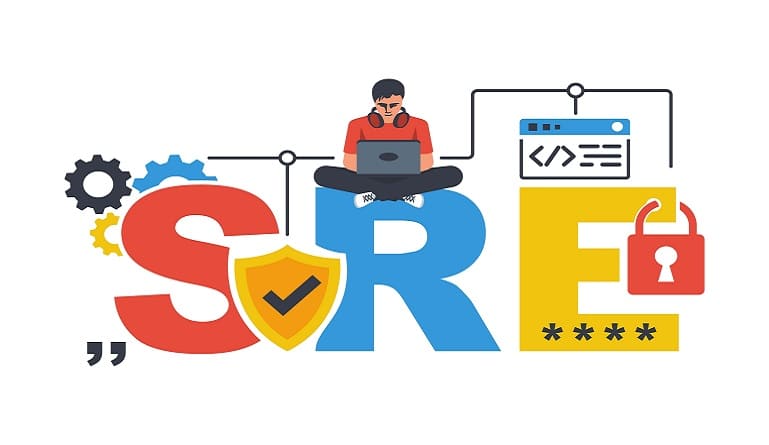Information Technology is fast becoming an invaluable business enabler for companies across industries. However, traditional approaches to managing IT infrastructure are reactive, process-based, and unsuitable for scalable and complex digital systems. Enter site reliability engineering or SRE, which reimagines IT operations managers as empowered engineers to drive innovation. Research shows that 62% of organizations are in various stages of implementing the SRE model – read on to learn what this entails.
The Evolution of Site Reliability Engineering
The SRE discipline emerged at Google in the early 2000s as a response to the company’s challenges in managing and scaling its complex infrastructure. Rapid growth and the increasing demand for its services called for a new approach.
Google realized that more than traditional operations models was needed to meet the demands of its large-scale distributed systems and growing user expectations.
Gradually, it recognized the importance of automation and engineering in achieving reliability at scale. Instead of only manual processes, Google engineers began to develop tools and systems to automate routine tasks, monitor system health, and implement proactive measures to prevent outages.
SRE introduced the concept of Service Level Objectives (SLOs) to define and measure the reliability of services from the users’ perspective. This fostered a cultural shift within Google – prioritizing reliability as a critical driver of customer satisfaction and business success. The success of SRE at Google inspired many other organizations to adopt similar practices and principles.
What is the Role of an SRE?
Site reliability engineers (SREs) are broadly defined as responsible for maintaining and improving the reliability of systems and applications. This involves monitoring system performance, identifying bottlenecks, and developing and implementing new solutions – like home-grown automation scripts.
Also, SREs play a crucial role in incident response and management. They are often the first responders to system outages or performance issues.
One of the routine aspects of the SRE role is analyzing system performance metrics and user traffic patterns. This helps anticipate capacity needs and design systems that can handle fluctuations in demand. SREs also collaborate closely with development teams to ensure that reliability and scalability considerations are integrated into the software development lifecycle.
Core Principles of SRE
Google – the brains behind the SRE discipline – lays down seven core principles for CIOs and CTOs looking to move to an SRE model from traditional IT. These are:
1. Embracing risk
SREs acknowledge that risk is inherent in complex systems and embrace it rather than trying to eliminate it. They understand that innovation and progress often involve taking calculated risks and prioritizing strategies to mitigate and manage risk effectively.
2. Using Service Level Objectives (SLOs)
SLOs are based on user expectations and provide a quantitative measure of service reliability, guiding engineering efforts and priorities. SLOs hold engineers accountable to users, just like SLAs do with clients.
3. Eliminating toil
Toil refers to repetitive, manual, and mundane tasks that do not provide long-term value. SREs focus on eliminating toil through automation, process improvements, and tooling, allowing teams to focus on more meaningful and strategic work.
4. Monitoring distributed systems
Effective monitoring is essential for gaining insights into system behavior, detecting anomalies, and diagnosing issues promptly. SREs design systems to capture relevant metrics and provide visibility into the health and performance of distributed systems.
5. Harnessing automation
Automation is vital in streamlining operations, reducing human error, and improving efficiency. SREs leverage automation tools and practices to automate routine tasks, deployments, configuration management, and incident response processes.
6. Adopting release engineering for stability
Release engineering focuses on ensuring the stability and reliability of software releases by implementing robust testing, deployment, and rollback mechanisms. SREs advocate for practices such as canary deployments, feature flags, and gradual rollouts to minimize the risk of service disruptions during releases.
7. Prioritizing simplicity in systems
Complexity is a common source of system failures and operational outages. SREs prioritize simplicity in system design, architecture, and processes to reduce cognitive load, enhance maintainability, and improve reliability.
SRE Practices and Tools
Technology leaders can invest in several practices and tools to empower their site reliability engineers. Of these, the must-haves are:
1. Monitoring and incident management platforms
Tools like PagerDuty, OpsGenie, or VictorOps can help streamline incident response processes. They facilitate real-time communication, escalation, and coordination during incidents, helping your SRE team resolve issues efficiently. Consider using these platforms with monitoring tools like Prometheus, Grafana, and Datadog. This creates a connected data flow from infrastructure performance metrics to incident resolution.
2. Containerization solutions
Embrace containerization technologies like Docker and container orchestration platforms like Kubernetes or Docker Swarm. Containers enable you to package and deploy applications consistently across different environments – they are best used with orchestration tools, which automate deployment, scaling, and management of containerized workloads. These tools give your SRE team much more flexibility than traditional deployment systems.
3. Chaos engineering
Experiment with Chaos Engineering tools like Chaos Monkey (from Netflix), Gremlin, or Chaos Toolkit to proactively test system resilience and identify potential weaknesses. Chaos experiments help you simulate real-world failures and validate the effectiveness of your resilience strategies.
Chaos engineering tools intentionally inject failure into your systems. By subjecting your systems to controlled chaos, you can test their resilience in real-world conditions and uncover potential points of failure that might not be apparent under normal operating conditions. This practice allows you to validate assumptions and build resilience.
4. Configuration management databases (CMDBs)
Maintain Configuration Management Databases (CMDBs) such as Consul or ZooKeeper to store and manage configuration data for your infrastructure and applications. CMDBs provide a centralized source of truth for configuration information and help SREs maintain consistency across environments. You can also use version control systems such as Git to manage changes to your code, configurations, and infrastructure-as-code (IaC) templates.
How to Build an SRE Team? Strategies for Implementing Site Reliability Engineering
Building an SRE (site reliability engineering) team requires a strategic approach to ensure the proper execution of reliability principles within your organization – especially since it signals a culture shift, not just an operational one.
Start by identifying people with the right competencies – look for candidates with experience in distributed systems, cloud computing, infrastructure as code, and DevOps practices. Define clear roles and responsibilities within your SRE team, with clear owners for monitoring, incident management, capacity planning, automation development, and performance optimization.
Error budgets are a crucial part of the SRE practice, so set aside funds to help balance innovation and reliability. This will allow teams to invest in new features if they stay within the allocated error budget.
As you assemble your team, prioritize continuous learning. The SRE discipline is defined by evolving technologies and best practices; offer upskilling opportunities so your team can keep up.
SER Represents a Fundamental Shift
The shift to SRE represents a transformative evolution in approaching reliability and scalability in IT operations. It’s not just about keeping systems running – it’s about engineering resilience, optimizing performance, and delivering exceptional user experiences in an unpredictable digital landscape.
In traditional IT operations, the focus often revolves around firefighting, reactive responses to incidents, and manual intervention to keep the lights on. Your primary goal might be to maintain uptime and resolve issues. With SRE, the emphasis shifts towards a proactive, engineering-driven approach. It encourages you to treat infrastructure as code, applying software engineering principles to innovate and not just keep systems running.
Also, prepare for a cultural shift. Traditional IT departments often operate in silos, with separate teams handling development, operations, and support. In contrast, SRE promotes a culture of collaboration, shared ownership, and blameless post-incident reviews – here, engineers are genuinely empowered.
That is why the SRE model has gained tremendous traction over the last decade. As cloud computing and complex infrastructure become the new normal for enterprises worldwide, more organizations will adopt this approach to deliver digital excellence.





